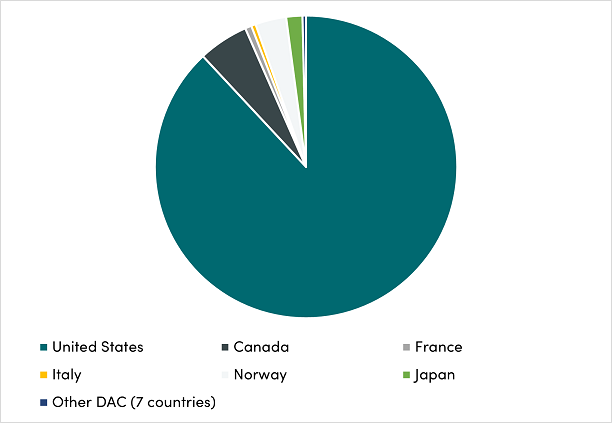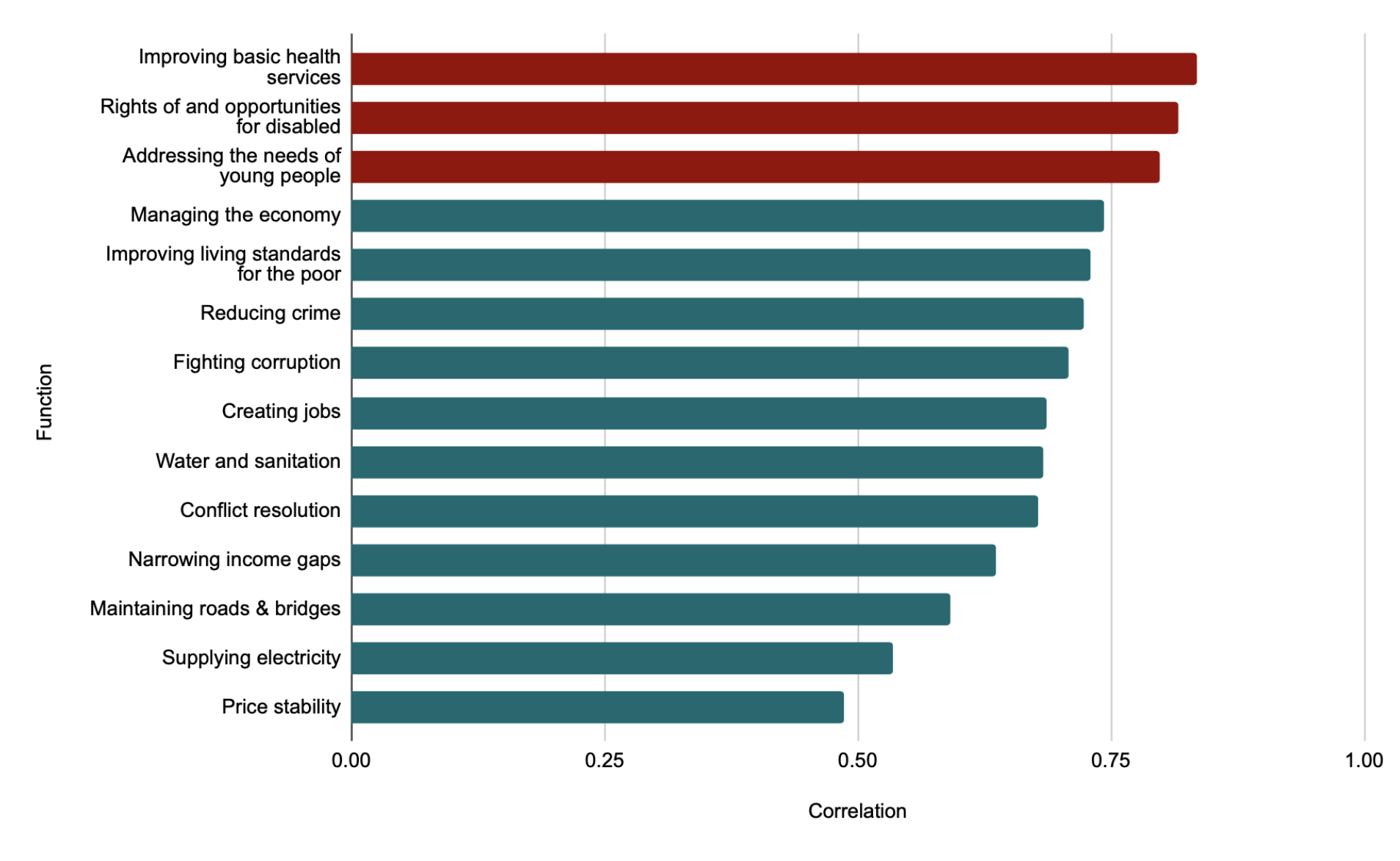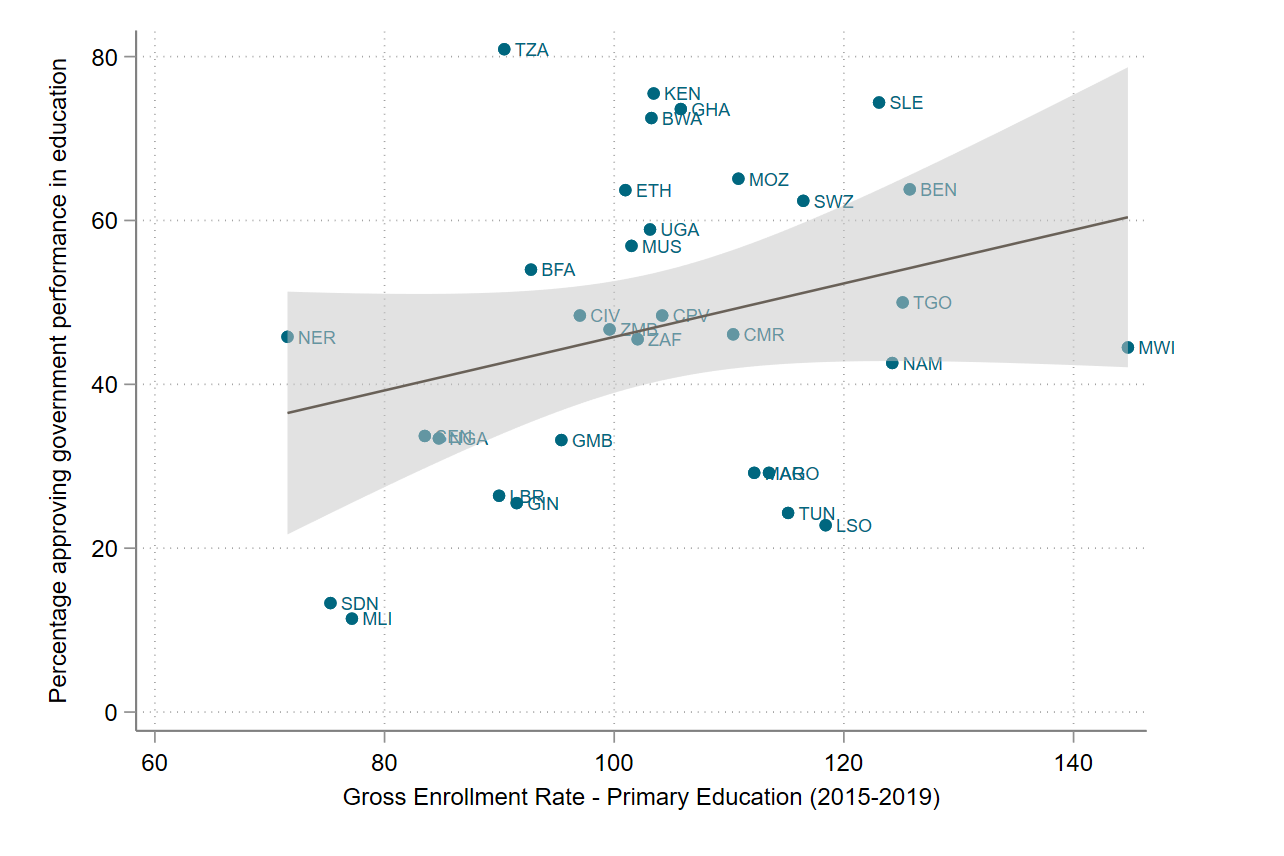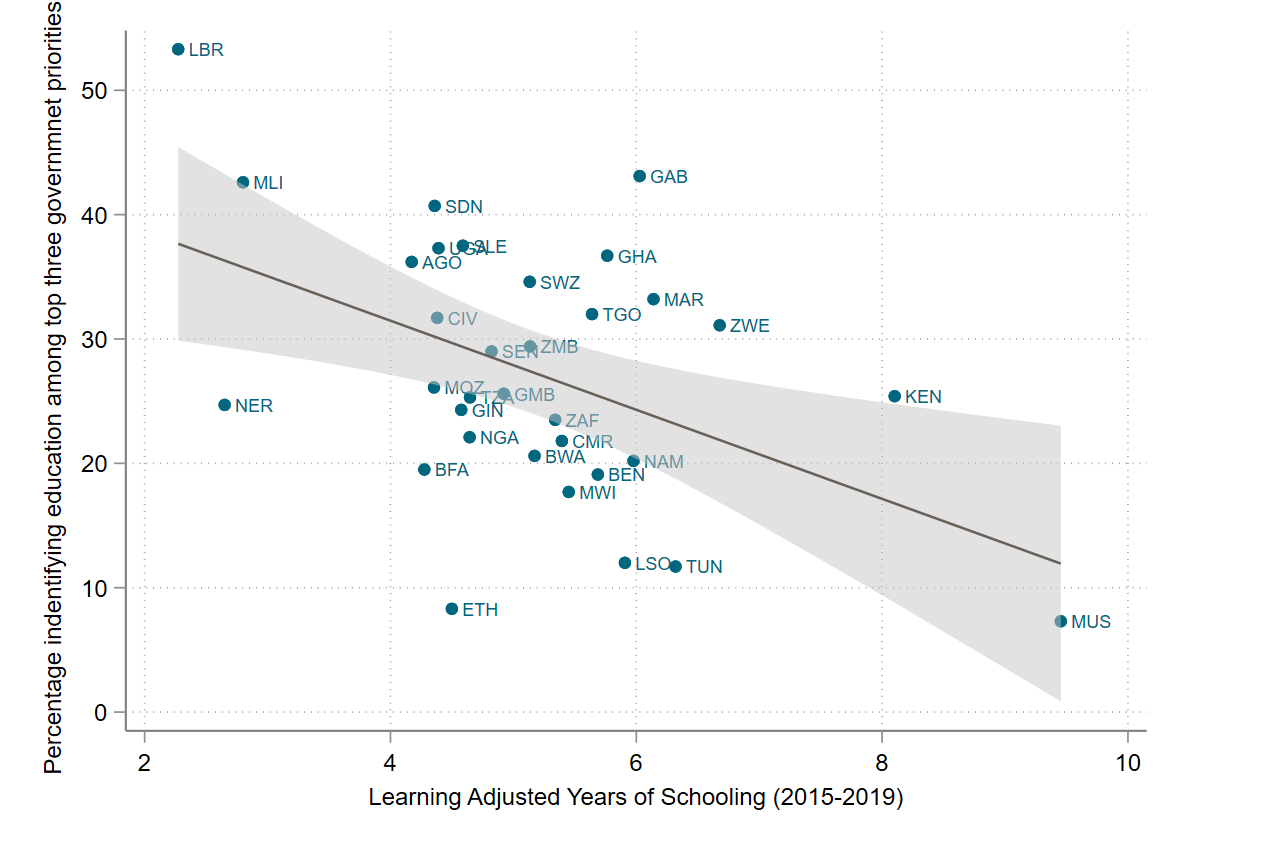Recommended

Blog Post
As one of the primary responsibilities of any modern government, the delivery of public education can inspire strong and diverse public opinions across a country. Public perception of how government is addressing educational needs—and the relative importance citizens attach to education among competing priorities—can hold political weight, regardless of the government’s performance on objective indicators. In places where incumbents respond to electoral incentives, public opinion can influence education policy and resource allocation decisions. In this blog, we discuss some patterns in public opinion on educational needs and performance across 34 African countries covered by the 8thround of the Afrobarometer survey in 2019-2021.
Overall, the public mood on education is slightly cheerless, with only 46 percent of citizens in the median country believing their government addresses education needs well. In other words, in a majority of 34 countries, well over half of surveyed citizens evaluate their government’s handling of education as “very bad” or “fairly bad.” Moreover, there is a significant disparity across the continent in the proportion of citizens that approve of their government’s performance in the education sector, ranging from 81 percent in Tanzania to 11 percent in Mali. A quarter of citizens in the median country put education as one of the top three priorities for government (or in the top 10 percent of all 33 public sector priorities identified). This makes education the third most popular public policy agenda next to unemployment and health.
Education enjoys popular support as a priority in some countries but risks losing momentum in others despite high dissatisfaction
Does citizen dissatisfaction with government performance in education go together with recognition of the sector as a priority? Figure 1 shows a set of countries where public dissatisfaction is matched by strong recognition of education as a priority (notably, Liberia, Gabon, Sudan, and Mali) sitting opposite another set of countries where higher performance approval is matched with identification of education as less of a priority for the future (for example, Ethiopia, Botswana, and Benin). However, there are also countries where higher performance approval coexists with strong support for education as a priority (Sierra Leone, Ghana, Uganda, and Eswatini). In the fourth (and most worrying) set of countries, the majority of citizens do not recognize education as a priority, partly because they weigh other needs as more pressing, even though they are dissatisfied with current performance (Tunisia, Lesotho, Nigeria, and Guinea).
Figure 1. Current performance and future priorities as per citizens’ assessments

Governments that receive high approval on education also tend to score high on citizen satisfaction in other human development and welfare functions. Figure 2 indicates that education is clustered together with public sector functions such as improving health services, protecting the rights of and promoting opportunities for the disabled, and addressing the needs of young people in terms of the correlations of approval ratings across various dimensions. In contrast, there is relatively low correlation between public satisfaction in education and government performance in providing physical infrastructure and price stabilization. This suggests that there is an underlying policy orientation or element of state capacity that is broadly conducive for human development and social welfare activities which contributes to some governments performing better than others in addressing educational needs.
Figure 2. Correlation of approval ratings of education and other government functions (N=34 countries)

Governments that provide more access to schooling earn higher approval, while citizens in countries where learning outcomes lag want governments to prioritize education
A survey-based measurement of citizen satisfaction with government performance can be driven by any number of factors, including general discontent with government that is not necessarily linked to any particular aspect of the education system. However, at least some of the variation in public opinion across countries is likely to reflect headline indicators for education. But is public opinion more correlated with education input or outcome indicators? Usually, the most generic indicator of public sector input is the share of education in government expenditure, which may signal the level of commitment to education by an incumbent administration. On the other hand, education outcome can be divided into two major categories as access and learning outcome indicators. For the present analysis, we use Gross Enrollment Rate in primary education to represent access and Learning Adjusted Years of Schooling (LAYS) to capture learning outcomes.
Figure 3. Public approval of government performance in education vs. access to primary schooling

Note: The regression coefficient is 0.371 (p-value=0.047). Control variables include share of education in government expenditure, LAYS and approval rating of government performance in managing the economy. Shaded area represents 95% confidence interval.
In a horse race between all three input and output indicators, access to primary education correlates most strongly with the rate of government approval for addressing educational needs. This finding remains valid even after we account for potential bias due to the contagious effect of discontent with other domains of governance. Considering that access to primary education has been a major hurdle in many countries across the continent, it would not be surprising if the number of young children going to school influenced citizen evaluation of government performance more strongly than how much those children learn at school.
On the priorities front, however, the proportion of citizens who place education among the top three priorities for government correlates most significantly with LAYS (Figure 4). This means that citizens in countries which are lagging behind in terms of overall learning outcomes tend to want their government to make more effort to address educational needs. This often implies that the public in such countries put education ahead of things like infrastructure and poverty reduction in their priority ranking. Unlike in the case of approval for current performance, primary enrollment rate does not seem to have much bearing on citizen preference for future resource allocation compared to learning outcomes.
Figure 4. Public preference on government priorities vs. learning outcomes

Note: The regression coefficient is -3.61 (p-value=0.013). Control variables include share of education in government expenditure and Gross Enrollment Rate in primary education. Shaded area represents 95% confidence interval.
Patterns in public opinion could be symptomatic of a shifting frontier from access to learning outcomes
In summary, as far as citizen evaluation of governments across Africa is concerned, outstanding performance in education is less of an isolated sectoral achievement than a result of broader commitment to human development and social welfare. Although governments that deliver higher rates of primary enrollment enjoy greater approval ratings, the relative importance of access is likely to decline as countries approach universal primary education. That is already reflected in the prominence of learning outcomes as a predictor of citizen preference for education as a top government priority for the future. African governments in countries that have a lot of ground to cover in improving learning outcomes would do well to heed their citizens’ will.
Disclaimer
CGD blog posts reflect the views of the authors, drawing on prior research and experience in their areas of expertise. CGD is a nonpartisan, independent organization and does not take institutional positions.






